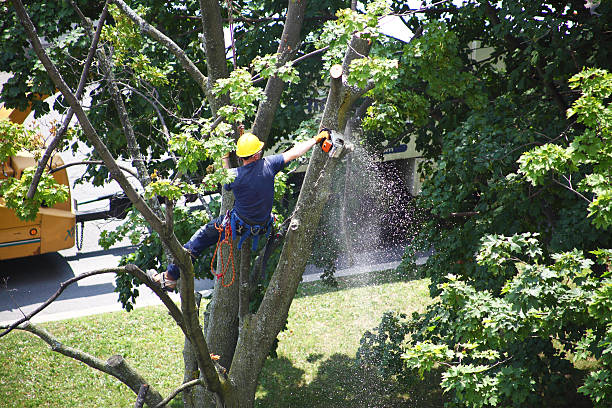When it comes to tree trimming, there are certain techniques that are considered best practices, as they promote tree health, safety, and aesthetics. However, there are also practices that are not recommended and can have negative consequences for the tree. In this article, we will explore some of these techniques that should be avoided.
1. Tree topping: One of the most common but detrimental practices is tree topping. This involves cutting off the entire top portion of the tree, leaving only stubs. It is often done to reduce the height or size of the tree quickly. However, this method severely damages the tree, leading to weak and structurally unsound growth. It also exposes the tree to diseases and pests, as the wounds are slow to heal. Tree topping should be avoided as it not only harms the tree but also ruins its natural shape and beauty.
2. Over-pruning: While some pruning is necessary to maintain tree health, over-pruning can be harmful. Over-pruning refers to the excessive removal of branches and foliage, leaving the tree with an imbalanced canopy. This practice weakens the tree’s structure, making it more susceptible to wind and storm damage. Moreover, removing too many branches can disrupt the tree’s ability to produce energy through photosynthesis, affecting its overall health and vitality. It is important to strike a balance between pruning for maintenance and allowing the tree to retain its natural form.
3. Flush cuts: Flush cuts are made when branches are pruned too close to the trunk, resulting in a smooth cut surface. This technique is discouraged as it removes the branch collar, which is responsible for the tree’s natural healing process. The branch collar contains specialized cells that help seal and protect the wound, preventing the entry of pathogens. Without the branch collar, the tree is more susceptible to decay and disease. When pruning, it is important to make cuts just outside the branch collar to promote proper healing.
4. Lion’s tailing: Lion’s tailing involves the removal of inner branches and foliage, leaving only a tuft of foliage at the end of each branch, resembling a lion’s tail. This practice is not recommended as it weakens the tree’s structure and can lead to branch failure. The inner branches play a crucial role in distributing weight and maintaining balance within the tree. By removing them, the tree becomes top-heavy and more prone to damage during storms or high winds. Lion’s tailing should be avoided to ensure the long-term health and stability of the tree.
5. Improper timing: Timing is essential when it comes to tree trimming. Performing major pruning during the wrong season can stress the tree and hinder its growth. For example, pruning in late spring or early summer can remove newly formed buds and flowers, affecting the tree’s ability to produce energy and bloom. It is best to consult with an arborist to determine the appropriate timing for pruning based on the specific tree species.
In conclusion, there are several tree trimming techniques that are considered to be not best practices. These practices, such as tree topping, over-pruning, flush cuts, lion’s tailing, and improper timing, can harm the tree’s health, structure, and aesthetics. It is important to educate oneself and hire professional arborists who follow proper tree-trimming techniques to ensure the long-term well-being of trees in our surroundings.

